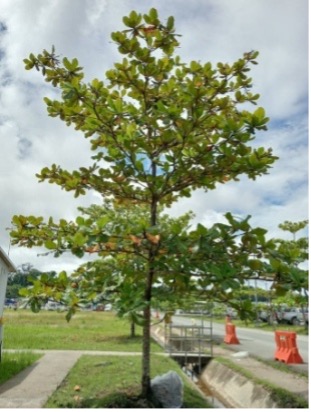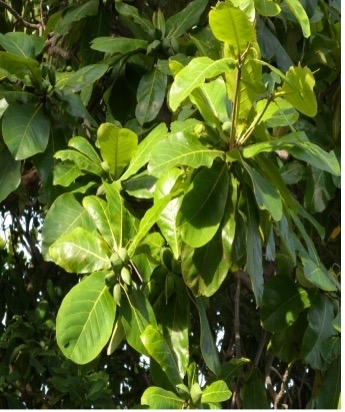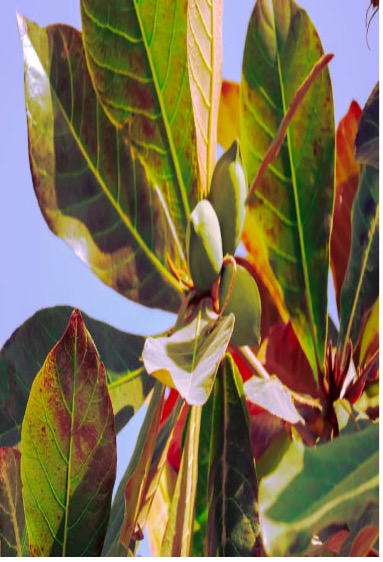HERBAL GARDEN
Vivek college of Ayurvedic Sciences & Hospital Bijnor UP
जंगली बादाम




Classification
Synoyms
देशी बदाम",
"श्रीफल",
"कर्णफला
Badam Parni
Desi Badam
Sea Almond
Habit
Large deciduous tree
Habitat
Native to tropical Asia, widely found along coastal regions. Commonly planted along roadsides and gardens in India
Morphology
- Leaves: Large, obovate, leathery, arranged spirally and turn red before falling
- Flowers: Small, white to greenish, in axillary spikes
- Fruits: Ovoid, green when young, turning reddish-purple when ripe, fibrous drupe with a hard shell enclosing edible seed
Chemical Composition
Tannins , Flavonoids , Saponins , hytosterols , Alkaloids , Gallic acid , Ellagic acid , Fixed oils and essential fatty acids in seeds
Guna-Karma
Rasa- Kashaya (astringent), Madhura (sweet)
Guna- Laghu (light), Ruksha (dry)
Virya- Sheeta (cooling)
Vipaka- Madhura (sweet)
Karma- Shothahara,
Vranaropaka, Rakta Shodhak, antya
Doshakarma- Pacifies Pitta and Kapha
Medicinal uses
Leaves used externally for skin infections and wounds
Decoction of leaves used in diabetes and liver disorders
Bark is astringent and used in diarrhea and dysentery
Oil from seeds is used for skin conditions and as hair tonic
Used in oral hygiene due to antibacterial properties
Seeds are nutritious and can be consumed like almonds
Useful Part
Leaves , Bark , Seeds (kernels) , Oil
Doses
Leaf decoction: 50–100 ml
Bark powder: 3–5 g
Seed oil: As required for external use
Important Formulation
Terminalia Catappa Leaf Decoction
Oil
Shloka
श्रीफलं स्वादु तिक्तं च, ग्राही शीतं रुचिप्रदम्।
व्रणशोधनमत्यर्थं, कासश्वासहरं परम्॥
Hindi Name
जंगलीबादाम (Jangli Badam)
English Name
Indian Almond / Tropical Almond
Botanical Name
Terminalia catappa
Family
Combretaceae